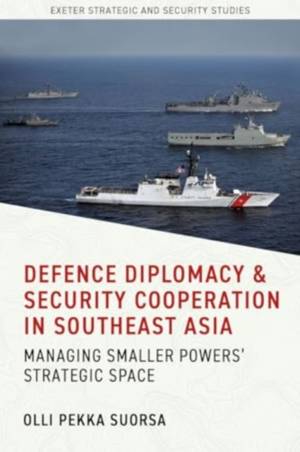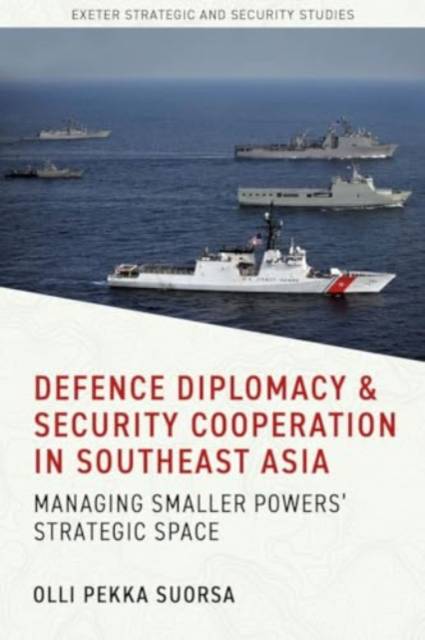
- Afhalen na 1 uur in een winkel met voorraad
- Gratis thuislevering in België vanaf € 30
- Ruim aanbod met 7 miljoen producten
- Afhalen na 1 uur in een winkel met voorraad
- Gratis thuislevering in België vanaf € 30
- Ruim aanbod met 7 miljoen producten
Zoeken
Defence Diplomacy and Security Cooperation in Southeast Asia
Managing Smaller Powers' Strategic Space
Olli Pekka Suorsa
€ 155,45
+ 310 punten
Omschrijving
Defence diplomacy is an increasingly important tool for strategic engagement used by states in Southeast Asia. This approach underpins simultaneous cooperation and competition in the contemporary Indo-Pacific region amid major power rivalries and growing activity in Southeast Asia and the South China Sea. The rise of China and the intensifying Sino-US competition has caught Southeast Asia at a geostrategic pivot where smaller states' strategic autonomy is increasingly difficult to manage. To address uncertainty in contemporary international relations, Southeast Asian states tend to hedge omnidirectionally. This helps them to avoid entrapment, abandonment, and over-dependence on any one major power. Such an adaptive combination of bilateral, multilateral, and minilateral defence diplomacy and security cooperation allows these states to diversify their relations with several bigger powers, avoiding direct involvement of outside powers in Southeast Asian affairs while delaying having to choose sides between China and the United States. This is the first book-length coverage of defence diplomacy in Southeast Asia and an important update on previous studies. It bridges a gap in the literature by linking defence diplomacy to a broader theoretical framework of alignment behaviour, and offers much-needed look into smaller powers' manoeuvring between major powers. This volume will be of interest to academics and policymakers alike, providing fresh perspectives and ideas for civilian and military decisionmakers and practitioners. More broadly, it will attract those seeking to better understand the military's role in foreign and security policy.
Specificaties
Betrokkenen
- Auteur(s):
- Uitgeverij:
Inhoud
- Aantal bladzijden:
- 272
- Taal:
- Engels
- Reeks:
Eigenschappen
- Productcode (EAN):
- 9781804131428
- Verschijningsdatum:
- 7/07/2026
- Uitvoering:
- Hardcover
- Formaat:
- Genaaid
- Afmetingen:
- 155 mm x 234 mm
- Gewicht:
- 789 g

Alleen bij Standaard Boekhandel
+ 310 punten op je klantenkaart van Standaard Boekhandel
Beoordelingen
We publiceren alleen reviews die voldoen aan de voorwaarden voor reviews. Bekijk onze voorwaarden voor reviews.








